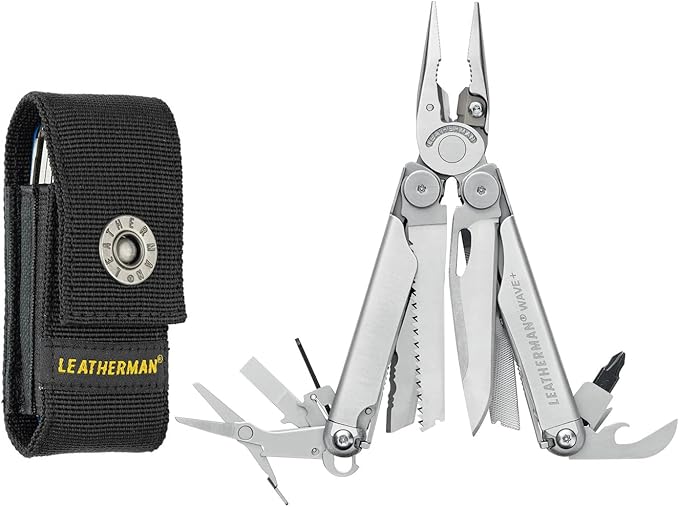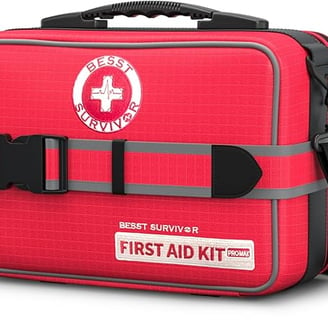Long-Term Wilderness Survival Gear: The Ultimate Guide
Discover the ultimate guide to long-term wilderness survival gear! From essential survival kits to advanced navigation tools, we cover everything you need to thrive in the great outdoors. Learn expert tips, get top gear recommendations, and prepare for your next adventure with our comprehensive resource. Don't miss out!
The Bug Out Bunker
8/21/20244 min read


The Basics: Building Your Survival Kit
Every wilderness survival journey starts with a well-stocked survival kit. Your kit should include the following essential items:
First Aid Supplies
Bandages, gauze, and adhesive tape
Antiseptic wipes and antibiotic ointment
Pain relievers and any personal medications
Tweezers and scissors
A comprehensive first aid manual, like the Wilderness First Aid Handbook
Multi-Tool
Look for a high-quality multi-tool with pliers, knife blades, can opener, and screwdrivers
Our top pick: Leatherman Wave+
Fire-Starting Tools
Waterproof matches or a reliable lighter
Ferrocerium rod for backup
Tinder, such as cotton balls soaked in petroleum jelly
Water Purification
Water filtration system, like the Sawyer Mini Water Filter
Water purification tablets as a backup
Stainless steel water bottle for boiling water
Are you an outdoor enthusiast planning an extended wilderness adventure?
Whether you're a seasoned survivalist or a beginner, having the right long-term wilderness survival gear is crucial for your safety and success.
In this comprehensive guide, we'll walk you through the essential equipment and supplies you need to thrive in the great outdoors.


Wilderness Equipment Essentials
When it comes to long-term wilderness survival, having the right equipment can make all the difference. Here are the key items you should invest in:
Backpack
Choose a durable, waterproof backpack with ample storage
Look for features like padded hip belts and multiple compartments
Our recommendation: Osprey Atmos AG 65
Tent
Select a lightweight, waterproof, and easy-to-set-up tent
Consider the season and weather conditions you'll be facing
Top pick: MSR Hubba Hubba NX
Sleeping Bag and Pad
Invest in a high-quality sleeping bag rated for the coldest expected temperatures
Pair it with an insulated sleeping pad for comfort and warmth
Our favorites: Western Mountaineering UltraLite and Therm-a-Rest NeoAir XTherm
Food and Water: Staying Nourished
Proper nutrition and hydration are crucial for long-term wilderness survival. Here's what you need to know:
Emergency Food Supplies
Pack non-perishable, high-calorie foods like energy bars, dried fruits, and nuts
Consider lightweight, dehydrated meals for easy preparation
Our top picks: Mountain House Freeze-Dried Meals and Clif Bars
Water Storage and Purification
Carry a durable, leak-proof water container, like the Nalgene Wide Mouth Water Bottle
Use a water filtration system or purification tablets to ensure safe drinking water
Learn how to locate and collect water from natural sources


Navigation and Communication Tools
Staying on course and being able to communicate are essential for long-term wilderness survival. Consider these tools:
Navigation Equipment
Topographic maps and a reliable compass
GPS device or satellite communicator, like the Garmin inReach Mini
Learn basic navigation skills and always carry a backup
Communication Devices
Two-way radios for short-range communication
Satellite phone or messenger for emergency situations
Our recommendation: Spot Gen4 Satellite GPS Messenger
First Aid and Emergency Preparedness
Accidents can happen in the wilderness, so being prepared with a well-stocked first aid kit is essential. Your kit should include:
Bandages, gauze, and adhesive tape
Antiseptic wipes and antibiotic ointment
Pain relievers and any personal medications
Tweezers, scissors, and a splint
Emergency blanket and a whistle
A comprehensive first aid manual
It's also crucial to learn basic first aid skills and CPR before embarking on your wilderness survival adventure.


Frequently Asked Questions
What should I look for in a long-term wilderness survival backpack?
Look for a durable, waterproof backpack with ample storage, padded hip belts, and multiple compartments.
How much water should I carry for long-term wilderness survival?
As a general rule, plan to carry at least one gallon of water per person per day. However, this can vary depending on the climate, your activity level, and water availability.
What are the best food options for long-term wilderness survival?
Focus on non-perishable, high-calorie foods like energy bars, dried fruits, nuts, and dehydrated meals.
How can I ensure I have safe drinking water in the wilderness?
Use a water filtration system, like the Sawyer Mini Water Filter, or water purification tablets to treat water from natural sources. Boiling water is another effective method.
What navigation tools should I bring for long-term wilderness survival?
Always carry topographic maps and a reliable compass. A GPS device or satellite communicator, like the Garmin inReach Mini, can provide additional peace of mind.
Conclusion
Preparing for long-term wilderness survival requires careful planning and the right gear. By investing in high-quality equipment, learning essential skills, and packing the necessary supplies, you'll be well-equipped to face the challenges of the great outdoors.Remember, no amount of gear can replace proper training and experience. Take the time to practice your skills, test your equipment, and familiarize yourself with the area before embarking on your wilderness survival adventure.Stay safe, stay prepared, and enjoy the incredible beauty of the wilderness!
Sources
Further reading
Emergency water storage and purifcation
Thanks and best regards
The Bug Out Bunker
Please note that some of the links in this article are affiliate links, which means we may earn a small commission if you make a purchase through these links. This helps support our content creation and allows us to continue providing valuable resources for our readers.
Survival
Stay prepared for any scenario with our expert insights.
© 2024. All rights reserved.
